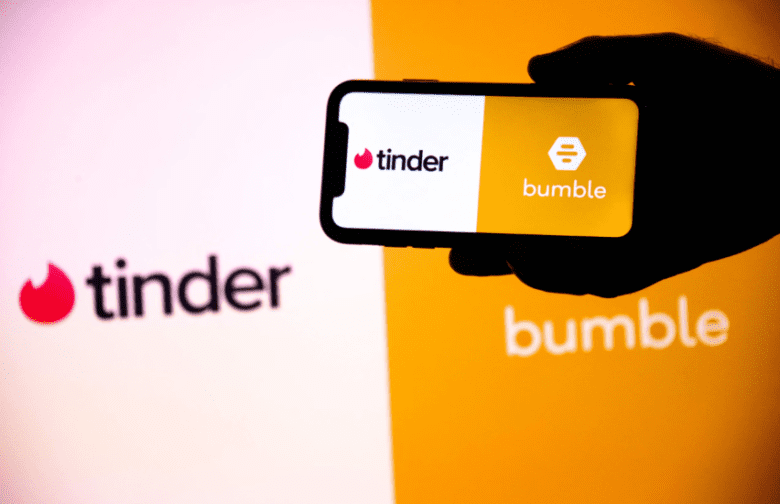Dating App Wars 2025: Why Hinge Booms, Bumble Declines, and Tinder Targets Gen Z
The Dating App Arena in 2025: A Market Shift Like Never Before
The dating app wars have escalated to an intense new level in 2025. As the world of digital dating continues to evolve, competition among the top players has intensified. Bumble Inc. has hit a slump, while Hinge continues to impress investors and users alike. Simultaneously, Tinder is giving its image a youthful facelift to stay relevant among younger users.
All of this unfolds against a backdrop of rapidly shifting cultural attitudes, particularly among Gen Z, who now dominate the dating app world. As the apps Tinder and Hinge continue to expand and experiment with new features, the landscape is being reshaped by both innovation and user expectation.
1. Hinge Continues to Thrive — Here’s Why
Record-Setting Growth Backed by Solid Numbers
Among all the rival dating apps Tinder faces, Hinge is proving itself as the most financially and culturally resilient. In the second quarter of 2025, Match Group, which owns Hinge, reported a 25% year-over-year increase in revenue, totaling $168 million. More notably, paying customers during the second quarter increased by 18%, reaching 1.7 million.
This growth is not just about volume. Hinge’s revenue per user also rose 6% to $32, showing a strong ability to monetize effectively — an area where Bumble is now falling behind. Clearly, Hinge continues to strike the right balance between meaningful experiences and monetization.
Deep Cultural Alignment with Gen Z and Millennials
What sets Hinge apart isn’t just numbers — it’s how it resonates with its core audience. Marketed as the app “designed to be deleted,” Hinge has positioned itself as the place for real relationships, not superficial swiping. This is a crucial distinction in 2025, as Gen Z increasingly values authenticity over quantity.
While Bumble Inc. and Tinder are giving users new features, Hinge is aligning its brand with real emotional connection, which is proving more effective in today’s climate.
2. Bumble Saw a Nearly 9 Percent Decrease in Paying Users
The Financial Downturn Explained
It’s been a tough year for Bumble. According to its Q2 financial report, Bumble saw a nearly 9 percent drop in paying users — that’s a 9 percent decrease in paying customers, from 4.1 million to 3.8 million compared to the same quarter last year. This decline has hit the company hard, contributing to a $367 million net loss, primarily driven by a $405 million impairment charge.
It’s worth repeating that this means a percent decrease in paying customers that is directly impacting Bumble’s revenue model, which relies heavily on subscriptions.
Strategic Cuts and AI Investments — Too Little, Too Late?
In an attempt to regain stability, Bumble Inc. implemented a workforce reduction of 30% — about 240 employees — as part of its cost-cutting efforts. While the company has increased its adjusted EBITDA margin to 38.1%, up from 27.9%, it’s clear that the user base erosion is a serious long-term concern.
This contraction happened in the quarter of 2025 as rival apps like Tinder and Hinge continue to innovate. Unfortunately, Bumble’s attempts to leverage AI haven’t been enough to reverse the user loss trend.
3. Tinder Is Giving Itself a Gen Z Makeover
A Strategic Pivot Toward Chill, Social Dating
Recognizing cultural trends, Tinder is giving its app a much-needed revamp. Under the leadership of Spencer Rascoff, Tinder is now leaning away from hookup culture and toward features that better match Gen Z values — low-pressure, socially centered, and emotionally safe dating.
This includes features like friends to match, where users can team up with friends to go on double dates — a concept that’s more in line with how Gen Z prefers to engage socially.
Relevance vs. Reinvention
Still the flagship brand of Match Group, Tinder faces the challenge of staying relevant. As 2025 as rival dating apps like Hinge surge, Tinder’s reinvention may determine its survival. With cultural preferences evolving, especially in terms of mental health and slower relationship pacing, Tinder’s changes could be either brilliant — or too late.
4. Gen Z Is Driving a Cultural Shift in the Dating App World
Gen Z — now the dominant force in the dating app world — is not playing by old rules. They are less interested in casual hookups and more concerned with safety, emotional well-being, and social compatibility. This generation also favors apps that support their communication style, which includes humor, group engagement, and real connection.
It’s no surprise then that Hinge is thriving and Tinder is being forced to adapt. Apps that stick to older models of endless swiping without depth risk obsolescence — and that’s the trap Bumble Inc may be falling into.
5. The Power of Data: Comparing the Big Three
Here’s a data-driven look at the three major platforms dominating the dating app wars in 2025:
| App | Revenue (Q2 2025) | Paying Users | Growth Trend | Key Feature |
| Hinge | $168M | 1.7M | +25% revenue | Focus on meaningful connections |
| Bumble | $248.2M | 3.8M (↓ 9%) | Saw a nearly 9 percent drop | Women-message-first model |
| Tinder | (Match Group total: $864M) | N/A | Holding steady | Group date testing, friends to match |
Hinge continues to thrive both in user growth and brand relevance. Meanwhile, Bumble Inc. is in a reactive position, and Tinder is somewhere in between — trying to rebuild momentum while avoiding further decline.
6. Global Growth and AI: The Next Phase of the App Wars
Match Group, the parent company of dating apps Tinder and Hinge, has pledged a $50 million investment into AI and international expansion. The move is designed to increase personalization, improve safety, and localize experiences across platforms.
This expansion also includes underdog platforms like Azar, which aim to reach users in emerging markets. AI-enhanced moderation and matchmaking will become key differentiators as the dating app wars expand beyond North America and into global territory.
7. Key Takeaways: Who’s Winning and What’s Next
Hinge Is Proving Its Power
With consistent growth, cultural relevance, and strong monetization, Hinge is proving it’s the app best aligned with user expectations in 2025.
Bumble’s Outlook Remains Uncertain
Despite its early success, Bumble saw a nearly 9 percent decline in key metrics, and the company is struggling to keep up with industry shifts.
Tinder’s Bet on Gen Z Could Be a Game-Changer
As Tinder is giving its platform new life through innovation, only time will tell whether its changes resonate deeply enough to recapture leadership in the dating app world.
Final Thoughts: Where Do We Swipe From Here?
The dating app wars are far from over. In fact, the customers during the second quarter of 2025 have made one thing clear: the winners will be those who not only adapt to technological change but also understand the emotional and cultural needs of their users.
Whether you’re swiping right or sitting on the sidelines, these platforms are defining how a generation connects, flirts, and falls in love.



